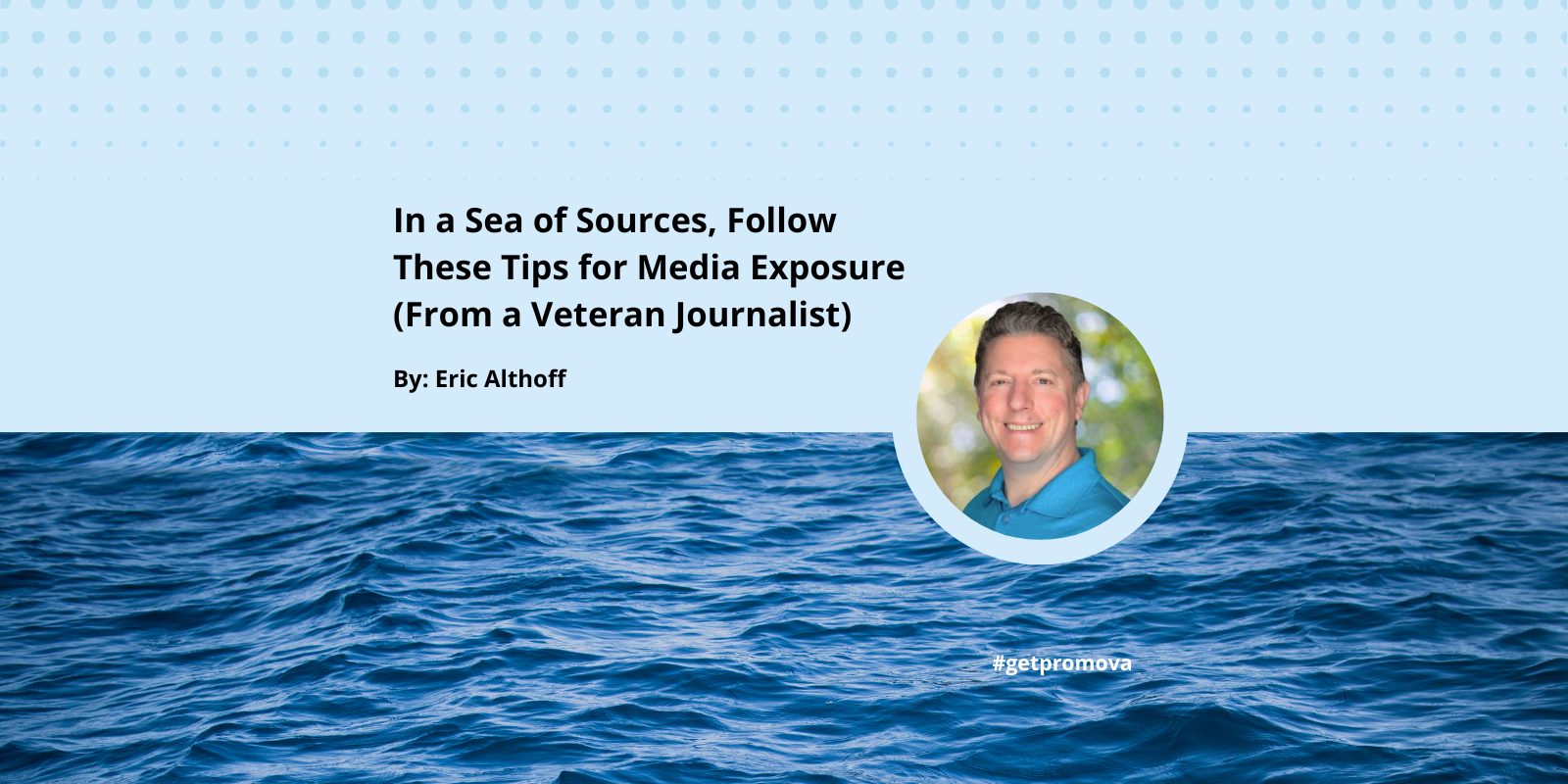
By Eric Althoff
One hundred emails—all from PR firms trying to get my attention. Just another Monday morning. Now multiply that figure by five workdays (or, since I used to have more trouble unplugging, seven).
While the companies, causes, personalities, products and clients they wanted me to interview and write about were incredibly diverse, each email could be summed up succinctly as: Pay attention…please.
And do it now.
Modern-day communication and direct contact from PR professionals to journalists have resulted in an overly saturated and non-stop flow of media pitches. Point being, as much as I have tried to read to the end of every well-meaning pitch or article sent my way, the vast majority I skim as there were dozens more right behind it. It is critical to recognize that journalists have little time to spare focusing on a media pitch, so it is essential to craft and refine relevant pitches with the idea that the end reader will likely be unfocused when reading it.
Being pitched is a constant filtering process, but there are certain things I look for when they bombard my inbox. There are some relatively simple ways to position yourself as a thought leader and make your pitch or article stand out from the crowd. Speaking as a journalist, this is what will catch our attention:
Don’t wing it, and don’t make assumptions
I once interviewed a former congressman, and my first question was how he wished to be addressed. Once “Will” and I passed that barrier, it was easy to develop a quick rapport—and I felt more at ease not having to say “Congressman” over and over. When in doubt, err on the side of caution in your first email, i.e., use “Mr.,” “Ms.,” etc. As a courtesy and to demonstrate my preference for informality, I will sign off with my first name when I respond. This small but meaningful gesture can put you on their good side as not everyone is as informal as me.
Also, don’t bury the lead in your pitch. Tell us why we should be interested quickly. Another way to look at it is to imagine you’re the 123rd person the guest of honor at a party has spoken to in the last hour, so it’s your job to be remembered. A well-crafted combination of communication know-how and a killer pitch makes you memorable.
Furthermore, a little bit of research on your “target” goes a long way. It is important to determine what the journalist typically writes about or the types of content a specific outlet publishes (bonus: writer’s bios often clue you into how they like to be addressed). Consider an email that commences along the lines of: “I saw your article about test-driving the new Chevy and Honda models, so perhaps you might be interested in learning about this new app we represent that compares the distance of various electric vehicle charges.”
This might also sound obvious, but pitching gardening content to a motor vehicle magazine won’t work; nor will pitching a national business writer about a rock band’s upcoming gig.
Unless you…
Find the unique hook
Let’s say our theoretical business writer has extensively covered the economic revival of Jackson, Mississippi. One of your clients is a band from the Magnolia State that will be playing at a historic Jackson juke joint recently renovated by an angel investor anxious to see his home city get back on its feet. The band itself might not be the main thrust that the business writer wants to cover, but the human interest angle might catch their attention—especially if you are also able to offer the investor as a primary source to pump up the business aspect of the story.
This hypothetical scenario demonstrates the importance of thinking creatively. If you’ve already pitched the band’s tour dates to every conceivable musical outlet, it might be time to research the venues and cities the band is playing to uncover such a connection—and a reason for the writer to want to know more about your client.
Also, a little humor goes a long way. The world is very serious, so lighten things up a bit in your pitch. I’ve found that marrying a giggle to learning something new makes people retain information longer: They pass the laugh along, especially when it’s linked to a new piece of information.
Which leads us to…
Be professional in the pitch and get the recipient’s name correct
I wish I was making this up, but I once received a pitch beginning: “Dear [fill in name here].”
Though it would have been quite amusing, I did not respond with “Thank you, Name TK.”
Look, we all copy and paste to save time—and we all make mistakes, but this was a lazy, amateur mistake. I cannot even recall what was being pitched my way…but I still remember this error years later.
And I’ll also let you all in on some insider info: Copy editors like me love to congregate with one another when you’re not looking in dimly lit watering holes to laughingly share anecdotes such as the pitch from the Fill-in-Name-Here people (while removing names and identifying details to protect the guilty). This is mentioned to remind you that a second pair of eyes to look over any corporate communication is a capital idea.
And if, by some happenstance, an error gets through, it’s not the end of the world. We’re all human; business will continue. Don’t beat yourself up. Always take five extra minutes to review before you hit send to minimize the likelihood of a mistake.
Just like you, we journalists are a busy bunch, with a bursting electric inbox. So when you pitch us, first do your homework, tell us something fascinating we might like to write about and spell things correctly. After all, you don’t want us copy nerds talking about you at our annual (OK, monthly) confab.
Eric Althoff is the Senior Copywriter + Editor at Promova. Eric is also an Emmy-winning writer and producer. His writing has appeared in The Washington Post, Los Angeles Times, Minneapolis Star-Tribune, Napa Valley Register, Washington Times, and elsewhere.
